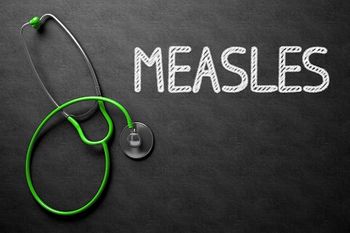The "Premature Deaths and Disparities Associated with Hepatitis C: The Hawaiʻi Hepatitis C Mortality Report" analyzed mortality data from 2000 to 2021. It revealed that between 2016 and 2017, individuals who died from HCV-related causes had an average lifespan of just 63 years, which is 17 years below the state's average life expectancy in 2018.1
The report's key findings reveal that people with hepatitis C in Hawaii typically have a shorter lifespan than the general population. Notably, 88% of residents who died from hepatitis C-related causes did not reach the age of 75, falling below the US life expectancy in 2021. Additionally, more than 40% of these deaths occurred before the average retirement age of 65, compared to 23% for deaths from all causes.1
The report also indicates that from 2017 to 2020, Hawaiʻi's death rates associated with HCV were notably lower than the US average, with a rate of 2.63 per 100,000 in 2020. This figure is below the US 2025 goal of ≤3.0 per 100,000 and suggests that the state is on track to meet the 2030 target of ≤1.44 per 100,000. Although, disparities in death rates were observed among male and white residents in Hawaiʻi, highlighting the need for targeted interventions to enhance liver health and reduce preventable deaths.1
Main Takeaways
- Individuals in Hawaiʻi who died from hepatitis C-related causes had an average lifespan of just 63 years, significantly lower than the state's average life expectancy.
- Males comprised nearly 73% of HCV-related deaths, while non-Hispanic Whites accounted for over half of these fatalities, highlighting significant demographic disparities.
- The report emphasizes the need for expanded HCV screening and treatment initiatives to improve health outcomes and work towards eliminating viral hepatitis by 2030.
Disparities are apparent among male and non-Hispanic White residents. From 2000 to 2020, males comprised nearly three-quarters (73.4%) of HCV-associated deaths, while they made up only 50.2% of the general population. Additionally, non-Hispanic White residents accounted for over half (50.7%) of HCV-related deaths, despite representing only 21.5% of the general population. The report recommends expanding low-threshold HCV screening and treatment, promoting universal HCV reflex testing, reducing insurance barriers, and creating culturally appropriate outreach materials to advance efforts toward eliminating viral hepatitis by 2030.1
The worry of hepatitis C has been a growing concern in Hawaii, last year the state reported higher liver cancer mortality rates due to HCV and hepatitis b virus (HBV) compared to the continental US, according to Thaddeus Pham, the Hawaii Department of Health’s Viral Hepatitis Prevention Coordinator. According to the CDC, the life expectancy of the Hawai'i state is 79 years.2 This data indicated that individuals with hepatitis C can die up to 20 years earlier than those without the disease. Pham aims to address this issue through the HepFree by 2030 campaign, which focuses on developing a surveillance system to track hepatitis spread and identify affected populations.3
Statistics show hepatitis B mortality rates in Hawaii have been three times higher than the US average, particularly among Asian and Pacific Islander residents. From 2000 to 2020, liver cancer mortality rates increased from 7.96 to 9.41 per 100,000. Hepatitis B and C are leading causes of liver cancer in the state.3
The findings from the Hawaii Department of Health's report highlight the impact of hepatitis C on mortality rates in the state, a significant public health issue. Action is required to address this issue through expanded access to screening, treatment, and targeted outreach and education efforts. The HepFree by 2030 campaign aims to create a comprehensive surveillance system and enhance community awareness. By focusing on these initiatives, Hawaiʻi can work toward better management of hepatitis C and improved health outcomes for its population.
References
Li F, Pham T, Fukuda N. Premature Deaths and Disparities Associated with Hepatitis C: The Hawaiʻi Hepatitis C Mortality Report. Honolulu, HI: Hawaiʻi State Department of Health, Harm Reduction Services Branch and Office of Planning, Policy, and Program Development; 2024. chrome-extension://efaidnbmnnnibpcajpcglclefindmkaj/https://health.hawaii.gov/harmreduction/files/2024/10/Hawaii-Hepatitis-C-Mortality-Report-FINAL-10-1-2024.pdf


































































































































































































































































































